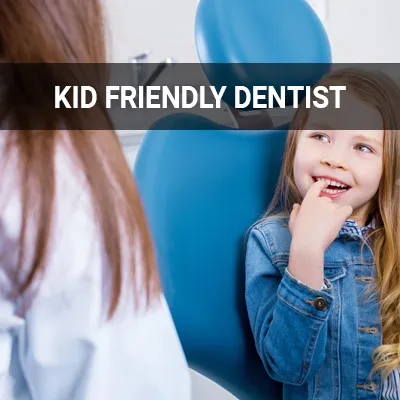Early Orthodontic Treatment Modesto, CA
Younger children sometimes show signs of an orthodontic issue. It is important to consider possible orthodontic options for smaller patients. Phase 1 orthodontics are early orthodontics treatment options for juveniles who do not have their permanent adult teeth yet.
Early orthodontics are available at Great Smiles Dental in Modesto and the surrounding area. The providers at our office can evaluate young children for potential orthodontic issues. Early intervention may benefit children who may have complex bite or orthodontic issues and prevent more extensive dental treatments later on.
Child orthodontics treatment may require a two-phased approach, starting as early as age 7 to correct some issues. Our team can help you determine if your child needs early orthodontic treatment. Call us at (209) 222-3636 to find out if your child should be evaluated for early orthodontics treatment.
Causes of Early Orthodontic Problems
Parents may worry if their child develops crooked teeth or an irregular bite. However, they should keep in mind that a child's mouth changes dramatically during the ages of six through 10. During this period, children lose most of their baby teeth. Their jaws may also develop a new size and shape. Thus, childhood can be a time of great change. Sometimes these changes include new orthodontic problems.
Most orthodontic concerns result from genetics. For example, a child may inherit a narrow jaw or other structural issues. Over time, they may develop crooked teeth or bite problems. Orthodontic problems may also be the result of thumbsucking or extended pacifier use. Sometimes, however, dental providers are not able to determine the cause of the problem.
Many parents feel guilty when their child develops orthodontic issues. But, in reality, any child can develop dental problems. Fortunately, these issues are treatable. Some may even resolve on their own. If the situation requires orthodontic treatment, however, early interceptive care can help. This type of care is sometimes known as phase 1 orthodontics.
“Most orthodontic concerns result from genetics.”
Phase 1 of Treatment
During phase 1 treatment, the orthodontist may use a variety of dental appliances to help align the patient's teeth. Phase 1 treatment usually occurs when the child still has their baby teeth. There are also some early orthodontics treatments that use braces during phase 1.
The orthodontist may use space maintainers or spacers to help space out crowded teeth. Expanders are also used during some phase 1 treatment plans to help gently expand the palate. Phase 1 treatment may also consist of appliances such as headgear, retainers, and braces to guide the jawbone and permanent teeth growth into a better position.
“Phase 1 treatment may also consist of appliances such as headgear, retainers, and braces to guide the jawbone and permanent teeth growth into a better position.”
What to Expect After Stage 1 Treatment
Phase 1 orthodontics usually lasts for one to two years, and most patients finish stage 1 treatment by age nine. During phase 1, the child may have regular checkups with their dental team. The team adjusts orthodontic appliances and takes measurements. They make sure the child stays on track. After phase 1 is complete, the child has a rest period. The dental team may remove phase 1 appliances and stop treatment. At this stage, the team can let parents know whether their child needs phase 2 care.
“Phase 1 usually lasts for 1-2 years, and most patients finish stage 1 treatment by age nine.”
Check out what others are saying about our dental services on Yelp: Early Orthodontic Treatment in Modesto, CA
Transitioning to Phase 2
Phase 2 may begin around age 10-11. During this stage of treatment, the team may recommend braces. Most children can expect to wear their braces for about two years. In some cases, treatment time may be longer or shorter. Keep in mind that each patient has unique dental needs. Some children might need to wear their braces for up to four years. The dental team can provide more information about each child's treatment timeline.
Not all children need phase 2 treatment. Sometimes, early orthodontic treatments can eliminate the need for braces. The dental team tracks each patient's progress during phase 1, and they can help families decide whether to proceed with phase 2.
“Sometimes, early orthodontic treatments can eliminate the need for braces.”
Questions Answered on This Page
Q. What happens during phase 1 of treatment?
Q. When should phase 2 be postponed?
Q. What causes orthodontic problems?
Q. How long does Phase 1 last?
Q. What can I expect from phase 2 treatment?
People Also Ask
Q. What are the differences between Invisalign and traditional braces?
Q. Should I choose Invisalign Teen for my child?
Q. How long does Invisalign take?
Q. What is the best age to consider Invisalign Teen?
Q. What foods can cause cavities?
When To Postpone Treatment Until Phase 2
While a two-phased approach to orthodontics can benefit many cases, some patients may be fine skipping phase 1. If the child has already lost most of their baby teeth, it may be better to opt for phase 2 treatment only. Additionally, there are some patients with minor problems that may not need extensive phase 1 intervention.
“If the child has already lost most of their baby teeth, it may be better to opt for phase 2 treatment only.”
Frequently Asked Questions About Early Orthodontic Treatment
Q. What is phase 1 orthodontics?
A. Phase 1 orthodontic treatment usually takes place between ages six and nine. During phase 1 care, the dental team looks for developing problems. They check your child's bite and jaw alignment. The team also takes steps to improve the alignment of adult teeth. Phase 1 usually involves retainers, palate expanders, and space maintainers.
Q. Does my child need phase 1 care?
A. All children should receive an orthodontic evaluation by age seven. During the assessment, the dental team performs a full exam. The team can let you know whether your child would benefit from early orthodontics.
Q. How can I find out if my child needs braces?
A. During the initial evaluation, the team may be able to determine whether your child needs braces. But in some cases, the team may delay their recommendations until phase 1 orthodontics is complete. Sometimes, teeth can shift during childhood and change treatment outcomes. Phase 1 treatment may also reduce or eliminate the need for braces.
Q. How long does orthodontic treatment last?
A. Phase 1 orthodontics usually lasts one to two years. If your child needs phase 2 treatment, their orthodontic treatment may continue. Phase 2 treatment might last for about one to three years. The dental team may also suggest breaks during various stages of treatment. Your dental provider can offer a detailed treatment timeline.
Q. How much does orthodontic treatment cost?
A. Treatment costs may vary depending on insurance coverage. Costs also depend on what type of treatment your child needs and how long your child remains in treatment. Our office team can provide more information about early orthodontics costs and coverage.
Dental Terminology
Call Us To Find Out More
To get your child evaluated for possible early orthodontics treatment, call us today at 209-222-3636. Not every child is a candidate for a two-phased treatment, and only an orthodontist can determine the proper course of action. In Modesto we provide complete orthodontic services for all phases of treatment.
Helpful Related Links
- American Dental Association (ADA). Glossary of Dental Clinical Terms. 2024
- American Academy of Cosmetic Dentistry® (AACD). Home Page. 2024
- WebMD. WebMD’s Oral Care Guide. 2024
About our business, license, and website security
- Great Smiles Dental was established in 2014.
- We accept the following payment methods: American Express, Cash, Check, Discover, MasterCard, and Visa
- We serve patients from the following counties: Stanislaus County and San Joaquin County
- We serve patients from the following cities: Modesto, Oakdale, Turlock, Tracy, Stockton, Lathrop, Ripon, Atwater, Salida, Manteca and Ceres
- CA (License #33512). View License Information and Specifics
- National Provider Identifier Database (1629180617). View NPI Registry Information
- Healthgrades. View Background Information and Reviews
- Norton Safe Web. View Details
- Trend Micro Site Safety Center. View Details
Back to top of Early Orthodontic Treatment










